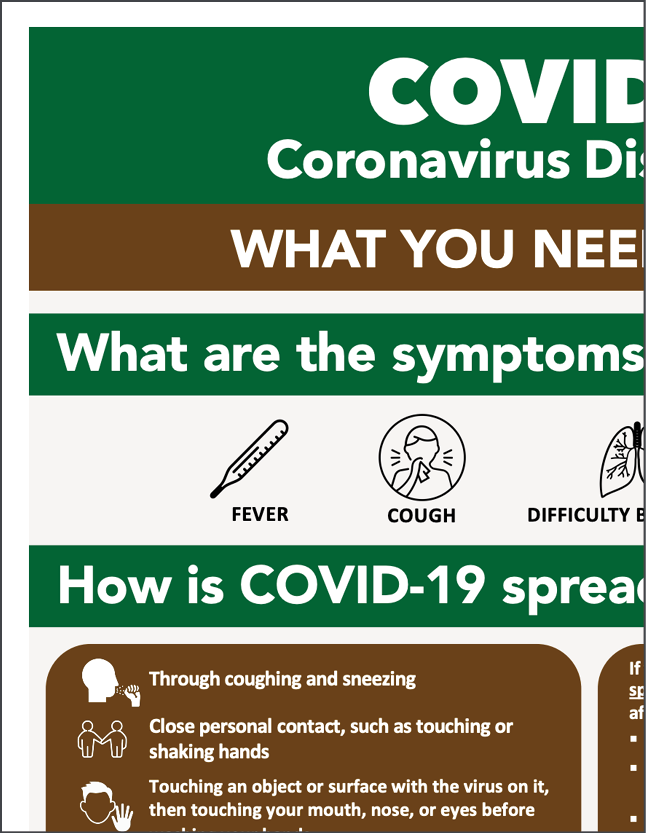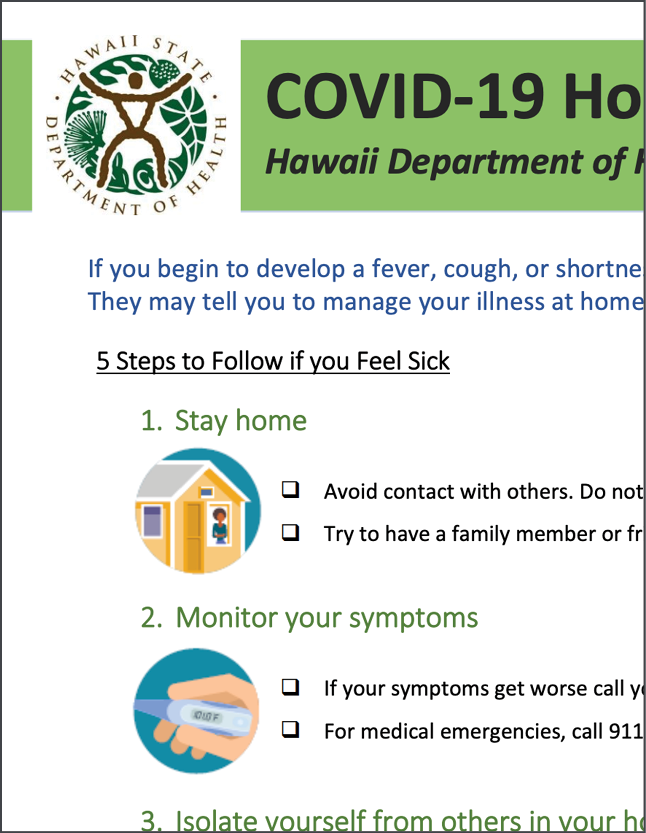School Guidance
The State of Hawaii has new measures for school decision making in transitioning from learning from home back to in-person education. The most important criteria for moving between learning models will be the school’s ability to follow mitigation strategies found in the Hawaii Department of Health Guidance for Schools. It is important to be able to react quickly to scale back, but even more important to plan accordingly and meet as many mitigation measures as possible before moving forward.
The Hawaii Department of Health has developed a data driven method to assist administrators in their decision making processes in choosing their school’s learning model. These parameters are in close alignment with the City and County of Honolulu’s Recovery Framework and will serve as a guide in transitioning between learning levels by using the state’s current case counts by island. By using the 7-day Daily Average per 100,000 population, the parameters may be applied to all islands, regardless of population size. The percent of positive tests is included as a secondary measure. Both criteria should be met in order to move toward in-person learning, but only case rate criteria need to be met to move back to a more restrictive learning model.
To move toward an in-person learning model:
A minimum of two weeks of data should be reviewed before considering transition to a new learning level. In order to move forward, the last two weeks should meet the lower learning model’s criteria. For example, if an island is in the red learning level, in order to move to orange, they should meet the orange criteria (for both case rate and percent positivity) for the last two consecutive weeks. If the criteria for the previous two weeks are not met, they should consider staying in the red learning model until two consecutive weeks of orange criteria are met.
Other factors to consider when deciding to move toward an in-person learning model is the school’s ability to put in place mitigation practices such as reducing the number of students and staff that regularly come in contact with each other, enforcing mask wearing, the ability to be physically distant (6 feet apart) and good cleaning and sanitizing practices. If a multilayered mitigation approach can be successfully implemented, schools can consider moving towards in-person learning models ahead of what is indicated by the threshold criteria.
To move back to a more restrictive learning model:
If the average daily case count for two weeks in a row is at a more restrictive level, schools should consider moving back to that level. For example, if an island is in the yellow learning model, but orange criteria (increase in case rate) are met for two weeks in a row, the schools should consider reverting back to orange for at least two weeks. A single week of increased case rates, or an increase in percent positivity alone, would not necessitate a change in learning model, but might signal a school to plan for a possible learning model change.
Other factors may be considered in deciding to move away from in-person learning. For example, an uncontrolled outbreak in a school might necessitate a return to a learn-from-home model for part or all of the school even if learn-from-home criteria are not met based on the island-wide metrics.

· Test percent positivity for Lanai and Molokai are based on all testing performed in Maui County
This graphic is updated on Wednesdays, unless that falls on a holiday, in which case it will be updated the following day.
What is the Current 7 Day Average on Each Island?
Printable Resources
- CDC: Preparedness 101: Zombie Pandemic e-Comic Book
- Middle and High School Cohorts
- Elementary School ‘Ohana Bubble
- Pre-School and Daycare ‘Ohana Bubble
- A Little Book About Coronavirus
- COVID-19 Interim Return to Work/School Guidance
- What to Do if a Person at School has COVID-19
- Teachers Guidance in Breakrooms
- Hawai’i Department of Health Covid-19 Guidance for Schools


